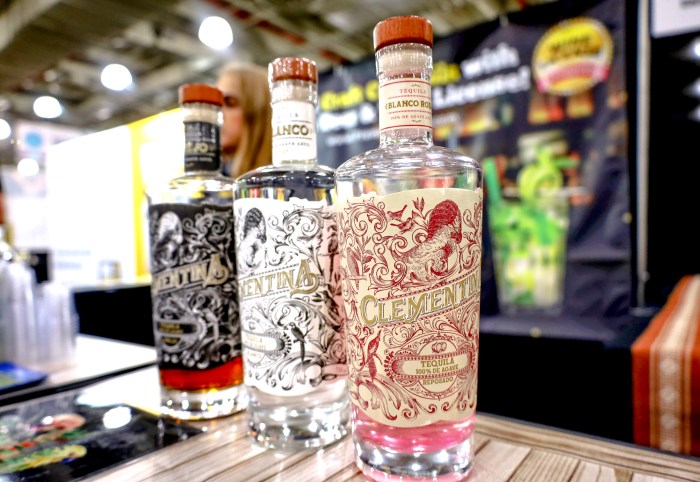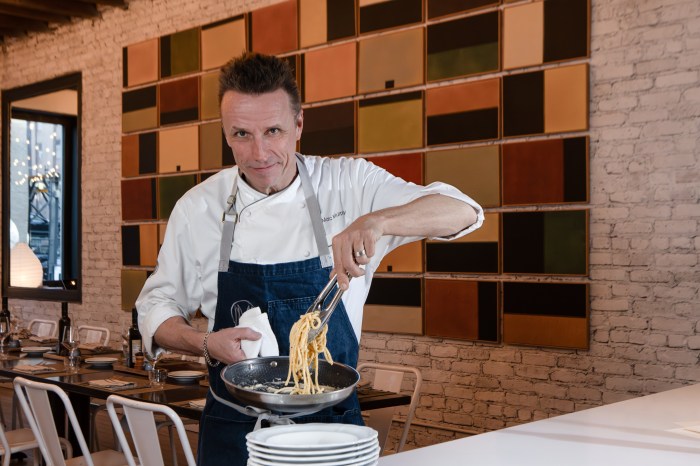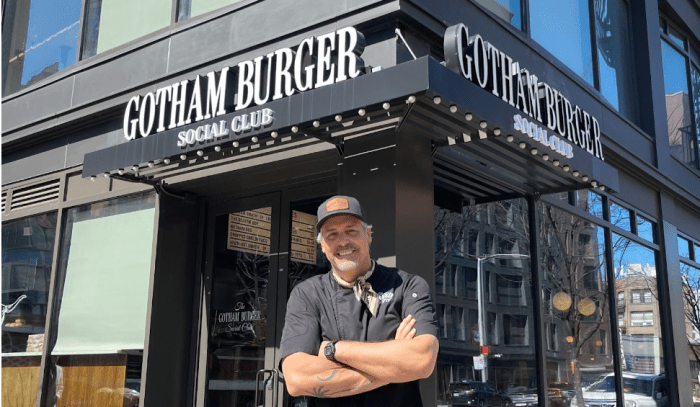
The name Pollan is synonymous with plants, thanks to author Michael Pollan’s famous ethos (“Eat food, not too much, mostly plants”).
The rest of the Pollan family is equally dedicated to promoting a diet rich in vegetables and home-cooked meals. In their second cookbook together, “Mostly Plants,” out now, sisters Tracy, Dana and Lori Pollan and their mother, Corky Pollan, share more than 100 recipes tailored to a flexitarian, or mostly plant-based, diet.
“It’s really about being inclusive, and it’s more of a lifestyle than being restrictive,” Dana says. “So it’s not what you can’t eat, it’s just when you eat more of the good stuff — the plants and the legumes and whole grains — then automatically you’re eating less of the processed food and less meat.”
amNewYork spoke with the authors, who all live in Manhattan.

On how the conversation regarding a mostly plant-based diet has changed over the years:
Lori: “There just seems to be such an understanding of flexitarianism — meaning emphasizing plants, not necessarily having to give up on meat. There’s so many articles about all the health benefits of incorporating more and more plants into your diet. On a personal level, I know so many people who are saying, ‘I’m really cutting down on meat. I’m really eating a lot more produce, a lot more beans and legumes.’ I think it’s such a building change that’s getting stronger and stronger every day.”
Corky: “In my household, since my father was in the produce business, we had a full range of vegetables. That was a little different than other people. When I was growing up, we would have asparagus or artichokes — those were very esoteric vegetables at that time. My friends didn’t even know how to eat an artichoke. And now today, they’re all over, and not just Whole Foods, but in any supermarket. And the variety of grains and legumes has changed so much, so cooking our way is so much easier today.”
On the approach they wanted to take with their cookbook:
Tracy: “I think that what we’re striving to do is to help make it more accessible for people, because we see so many people wanting to change the way they eat. They want to change the ratio of plants and the meat protein on their plates. They don’t always necessarily know how to do that. We want to show people how easy it is, and how accessible it is, and how it’s something you can do in the way that works for your own particular diet. And also to show all of the new and exciting vegetables and fruits that are so easily found these days. You can find them in Target, you can find them in Whole Foods and Costco, and things that weren’t as readily available even just five years ago or so are available now.”
On what spring produce they’re excited about:
Tracy: “I love all of the fresh spring greens that are available. I love to cook with asparagus and artichokes and I love the baby bok choy you can find in the spring.”
Dana: “What I’m excited about is lots of great strawberries and also rhubarb. You can actually go the dessert route. You can make lots of great crumbles.”
Lori: “Spring always for me also means ramps, which have such a short season. You can eat them and see them available at the farmers market for just a couple months. So it’s really fun to take advantage of them. You can sauté them with olive oil and add to pasta. You can make ramp butter. You can make ramp risotto.”
Corky: “I like the spring onions too, they’re wonderful for cooking with. That’s something I look forward to.”
On how produce availability has changed in the past five years:
Tracy: “The rainbow carrots are really wonderful. That’s something that I remember maybe just in the middle of summer, I could find them at farmers markets. And now, many, many times when I go to one of the markets, I can find those. As well as the mini Brussels sprouts, which I didn’t ever used to see. I love when you can find those tiny Brussels sprouts, they’re so much sweeter, as well as the smaller bok choy, or just bok choy in general. And then there’s also so many mushrooms, which is a great thing to count on when you’re trying to eliminate or lessen the amount of meat in a recipe because they have such a sort of meaty and satisfying flavor. So I just now can find almost any kind of mushroom that I want to cook.”
Lori: “Broccolini has gotten a lot more available. It used to be just sort of in specialty stores, but now most of the supermarkets carry it. And it’s a really nice broccoli — it’s longer stemmed, and it’s got a nice sweetness to it too.”
Dana: “If you go in the grocery store now, there’s like three different kinds of kale or cauliflower. There’s purple cauliflower. There’s so much more to choose from. So it really is such an exciting time right now, with this explosion of all this diversity with vegetables to cook. You can be so much more creative.”
In season: asparagus
If you’re looking for some inspiration for all the asparagus coming into season, the Pollans share their recipe from "Mostly Plants."
Brown butter asparagus with melted fontina and pistachios
Makes 4-6 servings
- Kosher salt
- 2 lb. asparagus, trimmed
- 2 tbsp. unsalted butter
- Freshly ground black pepper
- 4 oz. Italian fontina cheese, thinly sliced
- 1/4 cup unsalted shelled pistachios, roughly chopped
1. Preheat the oven to broil.
2. Fill a large ovenproof (preferably cast-iron) skillet with 1 inch of water and add 1/2 tsp. salt. Bring the water to a boil, then add the asparagus in a single layer and cook for 3 to 4 minutes, until crisp-tender. Drain the asparagus.
3. In the same skillet over high heat, melt the butter and cook until foamy and lightly browned. Reduce the heat to low, return the cooked asparagus to the skillet, and gently shake the pan to coat it with the butter. Remove from the heat and season with salt and pepper.
4. Lay the slices of cheese on top of the asparagus and sprinkle with the pistachios. Broil until the cheese is melted and light golden brown, 1 to 3 minutes. Serve hot.
From the book “Mostly Plants.” Copyright © 2019 by Old Harvest Way, LLC. Published on April 16, 2019, by Harper Wave, an imprint of HarperCollins Publishers. Reprinted by permission.
IF YOU GO
Find the Pollan family:
-In conversation with Michael J. Fox and Ali Wentworth on Wednesday at 7:30 p.m. at the 92nd Street Y | 1395 Lexington Ave. | tickets from $40 at 92y.org
-Doing a plant-based cooking demo and signing on April 25 at 6 p.m. at Bloomingdale’s | 1000 Third Ave., 8th floor demo kitchen | FREE

















